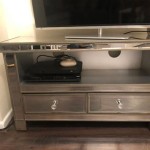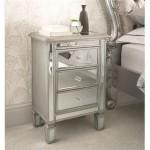How To Glue A Mirror Brick Wall
Creating a mirror brick wall can transform the ambiance of a room, adding depth, light, and a touch of modern elegance. A successful installation hinges on careful planning, precise execution, and the selection of appropriate materials, particularly the adhesive. This article provides a comprehensive guide to gluing mirror bricks onto a wall, covering everything from preparation to final inspection.
Before embarking on this project, it is crucial to understand the fundamental principles of adhesion and substrate compatibility. Not all adhesives are created equal, and selecting the wrong adhesive can lead to failure, resulting in dislodged mirror bricks and potential damage. Furthermore, the condition and type of the wall itself play a significant role in the adhesion process. A thorough assessment of both the wall and the mirror bricks is the first step towards a professional and long-lasting installation.
Preparing the Wall Surface
The wall surface must be clean, dry, and structurally sound to ensure proper adhesion. Any existing paint, wallpaper, or loose debris needs to be removed. Failure to do so will compromise the bond between the adhesive and the wall, leading to potential failure over time. Begin by visually inspecting the wall for any signs of damage, such as cracks, holes, or water stains. Address these issues before proceeding.
For painted walls, determine the type of paint. Glossy or semi-gloss paints are less porous and can inhibit adhesion. These surfaces should be roughened using sandpaper or a chemical deglosser to create a better bonding surface. Matte paints, while generally more porous, still require cleaning to remove dust, dirt, and grease. Use a mild detergent solution and a clean sponge to scrub the wall, followed by a thorough rinse with clean water. Allow the wall to dry completely before proceeding.
Wallpaper must be completely removed. This can be a tedious process, but it is essential for optimal adhesion. Use a wallpaper scoring tool to perforate the wallpaper, allowing a wallpaper removal solution to penetrate and loosen the adhesive. Follow the manufacturer's instructions for the wallpaper removal solution. Once the wallpaper is removed, wash the wall with clean water and allow it to dry completely.
For walls with cracks or holes, repair these imperfections with patching compound. Apply the compound according to the manufacturer's instructions, ensuring that the surface is level and smooth. Allow the patching compound to dry completely before sanding it down to blend seamlessly with the surrounding wall. Prime the patched areas before applying the adhesive.
Finally, regardless of the wall surface type, prime the wall with a suitable primer. A primer acts as a bonding agent, creating a uniform and porous surface for the adhesive to grip. Choose a primer specifically designed for bonding with adhesives and for the type of wall surface (e.g., drywall, plaster, concrete). Apply the primer according to the manufacturer's instructions and allow it to dry completely before moving on to the next step.
Selecting the Correct Adhesive
Choosing the right adhesive is critical for the success of the mirror brick wall installation. The adhesive must be specifically formulated for bonding mirrors to the wall surface. Conventional construction adhesives are often incompatible with mirrors and can damage the reflective backing, leading to discoloration or degradation. Mirror mastic is the preferred adhesive for this type of project.
Mirror mastic is a specialized adhesive designed to bond mirrors to various surfaces, including drywall, plaster, concrete, and wood. It is formulated to be non-corrosive and will not damage the mirror's reflective backing. Read the manufacturer's specifications carefully to ensure that the chosen mirror mastic is compatible with both the mirror brick material and the wall surface.
When selecting mirror mastic, consider the size and weight of the mirror bricks. Larger and heavier bricks may require a stronger adhesive with a higher shear strength. Shear strength refers to the adhesive's ability to resist forces that try to slide the mirror brick off the wall. Consult the adhesive manufacturer's guidelines to determine the appropriate amount of adhesive needed per brick based on its size and weight.
Furthermore, consider the environmental conditions of the room where the mirror brick wall will be installed. If the room is subject to high humidity or temperature fluctuations, choose an adhesive that is resistant to these conditions. Some mirror mastics are formulated to withstand extreme temperatures and moisture, ensuring a long-lasting and reliable bond.
Read the safety data sheet (SDS) for the chosen adhesive carefully. The SDS provides information on the adhesive's chemical composition, hazards, first aid measures, and safe handling procedures. Wear appropriate personal protective equipment (PPE), such as gloves and eye protection, when working with adhesives. Ensure adequate ventilation in the work area to avoid inhaling harmful vapors.
Applying the Adhesive and Installing the Mirror Bricks
Once the wall surface is properly prepared and the appropriate adhesive is selected, the next step is to apply the adhesive and install the mirror bricks. Precision and attention to detail are crucial at this stage to ensure a professional and aesthetically pleasing result. Start by planning the layout of the mirror bricks on the wall. Use a level and measuring tape to mark the desired location of each brick.
Apply the adhesive to the back of each mirror brick according to the manufacturer's instructions. Typically, mirror mastic is applied in vertical beads or dabs across the entire surface of the mirror brick, avoiding the edges to prevent squeeze-out. The amount of adhesive will depend on the size and weight of the brick. Use a notched trowel to spread the adhesive evenly, ensuring consistent coverage.
Carefully position the mirror brick onto the wall, aligning it with the marked location. Press firmly and evenly to ensure good contact between the adhesive and the wall surface. Use a level to ensure that the brick is perfectly horizontal or vertical, depending on the desired orientation. Minor adjustments can be made within the first few minutes before the adhesive begins to set.
For larger mirror bricks, consider using temporary supports, such as painter's tape or shims, to hold the bricks in place while the adhesive cures. These supports will prevent the bricks from sliding or shifting during the curing process. Follow the adhesive manufacturer's recommendations for curing time. Typically, mirror mastic requires 24 to 48 hours to fully cure.
Repeat the process for each mirror brick, maintaining consistent spacing and alignment. Use spacers or tile wedges to ensure uniform gaps between the bricks. Clean any excess adhesive that squeezes out from between the bricks with a damp cloth. Avoid using harsh solvents or abrasive cleaners, as these can damage the mirror's reflective surface.
After the adhesive has fully cured, remove any temporary supports and inspect the mirror brick wall for any imperfections. Fill any gaps or cracks between the bricks with a grout specifically designed for mirrors. The grout should be non-abrasive and compatible with the mirror's surface. Apply the grout according to the manufacturer's instructions, ensuring that it fills the gaps completely and is flush with the surface of the mirror bricks.
Finally, clean the entire mirror brick wall with a glass cleaner and a soft cloth. Pay particular attention to removing any grout haze or adhesive residue. Buff the surface of the mirror bricks to a shine, revealing the full reflective effect. Inspect the installation for any loose or damaged bricks and address them promptly.

How To Stick Mirror On Brick Wall Bunnings Work Community

How To Stick Mirror On Brick Wall Page 2 Bunnings Work Community

How To Stick Mirror On Brick Wall Bunnings Work Community

How To Stick Mirror On Brick Wall Page 2 Bunnings Work Community

How To Stick Mirror On Brick Wall Bunnings Work Community

How To Stick Mirror On Brick Wall Bunnings Work Community

3 Simple Ways To Hang A Mirror On Wall Without Nails Wikihow

Quickest Way To Hang Mirror On Brick Wall

How To Stick Mirror On Brick Wall Bunnings Work Community

3 Simple Ways To Hang A Mirror On Wall Without Nails Wikihow








